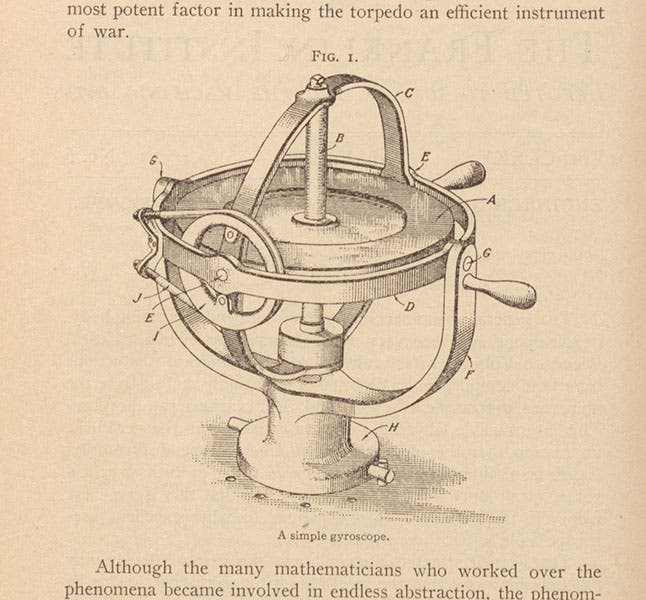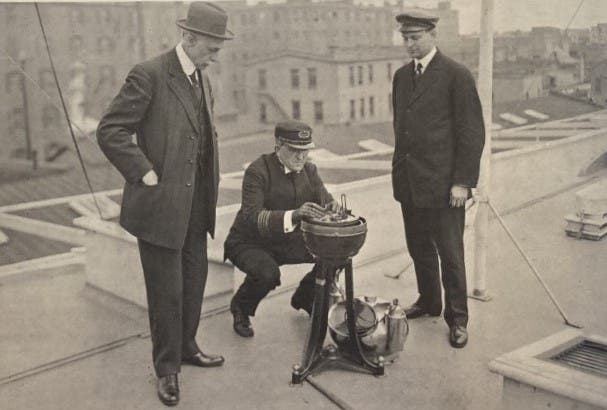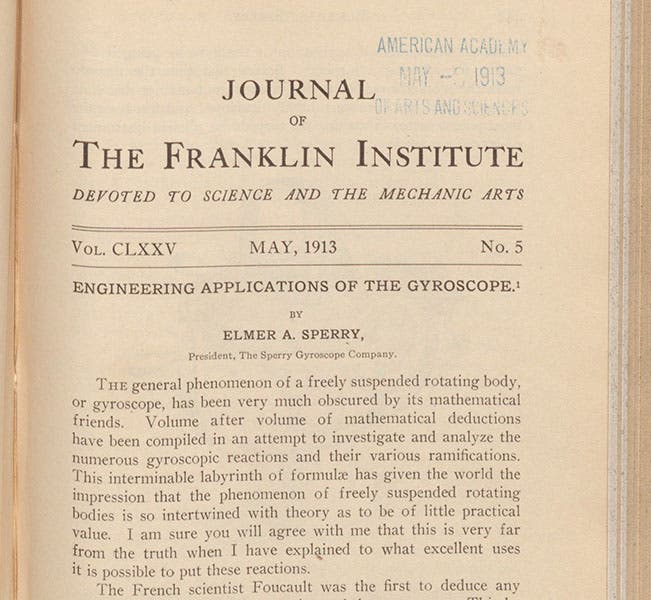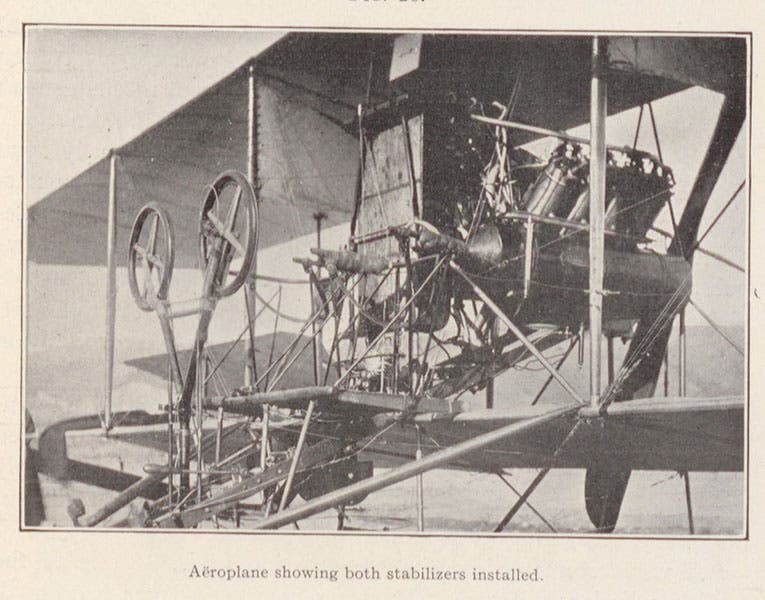Scientist of the Day - Elmer Sperry
Elmer Sperry, an American inventor, was born Oct. 12, 1860. Raised in mid-state New York, he seems to have been an inventive youth, and he attended Cornell University only until he got his first Big Idea, at which point he moved to Chicago and proceeded to found a series of companies, to build electrical mining machinery, or electric railways, and electric automobiles. All seem to have been successful.
But his most important work revolved around gyroscopes. It began when he first encountered a rolling ship on a transatlantic crossing around 1900. Tall clipper ships were fairly steady in the water, but the new steel-hulled steamers were so squat that they acted just like pendulums in the water, swinging from side to side at a regular rate that could be quite nauseating to passengers, and even to seasoned sailors. Sperry came up with the idea of trying to stabilize ships with gyroscopes. The curious thing about gyroscopes, which are just rotating discs that are mounted on three axes and free to move in three directions, is that if you push on the main axis of the rotating disc, it will not move in the direction you push, but rather in a direction at a right angle to your push. This is called precession, and it can be seen in a spinning top that reacts to gravity by slowly precessing in a circle instead of falling over. So you ought to be able to put a massive gyroscope in the hull of a ship, so that when the ship starts to roll, the gyroscope resists, and instead precesses.
Others had used gyros in ships before Sperry, but they were not too effective, because they were passive, and waited for the ship to roll before reacting. Sperry had the idea of using a small sensitive gyro to detect the onset of a roll, which then activated servo motors to start processing the main gyros, well before the ship had started to roll. He installed his gyros on several U.S. Navy ships around 1910 and they worked well. By the time the U.S. entered World War I, Sperry gyro stabilizers had ben installed in a number of warships, although their expense prevented more widespread use. However, Sperry did manage to find a way to make gyro stabilizers small enough and light enough to install in airplanes, the first step toward making an auto-pilot, which would eventually become a reality, once Sperry had invented an artificial horizon and a roll and pitch indicator, all based on gyroscopes.
Sperry’s other great invention involving gyroscopes was the gyro compass. Magnetic compasses had been used for centuries for ship navigation, and they worked reasonably well in wooden-hulled ships. But as soon as you surrounded a magnetic compass with an all-metal hull, there was bound to be trouble. And in a warship, where everything was shielded in armor-plate, magnetic compasses were essentially useless. A spinning gyroscope orients itself to a point in space and does not care about its immediate surroundings. Sperry found a way to turn a gyroscope into a compass that was much more accurate than a magnetic compass, which suffered from all kinds of deviations and variations caused by the vagaries of the Earth's magnetic field. Gyro compasses, unlike gyro stabilizers, were not that expensive to make, and were installed in all Navy ships by the end of the War.
Sperry founded Sperry Gyroscope Company in 1910 and based it in Brooklyn. It was well after his death that Sperry Corporation merged with Remington Rand to become Sperry Rand. Sperry was buried in Green-wood Cemetery in Brooklyn, where he rests with several other great American inventors, including Samuel F.B. Morse, Peter Cooper, and Elias Howe.
Most of our images were taken from an article that Sperry published in the Journal of the Franklin Institute in 1913. Our second image, the portrait-with-gyrocompass, was taken from a biography of Sperry written by Thomas S. Hughes that we have in the Library. This was one of Hughes’ first books and it is excellent; he would go on to become one of the most highly respected historians of technology in the country.
William B. Ashworth, Jr., Consultant for the History of Science, Linda Hall Library and Associate Professor emeritus, Department of History, University of Missouri-Kansas City. Comments or corrections are welcome; please direct to ashworthw@umkc.edu.












